Subscribe to our ▶️YouTube channel🔴 for the latest videos, updates, and tips.
Home | About Us | Contact Us | Privacy | Math Blog
Parametric Equation of the Hyperbola
We will learn in the simplest way how to find the parametric equations of the hyperbola.
The circle described on the transverse axis of a hyperbola as diameter is called its Auxiliary Circle.
If x2a2 - y2b2 = 1 is a hyperbola, then its auxiliary circle is x2 + y2 = a2.
Let the equation of the hyperbola be, x2a2 - y2b2 = 1
The transverse axis of the hyperbola x2a2 - y2b2 = 1 is AA’ and its length = 2a. Clearly, the equation of the circle described on AA’ as diameter is x2 + y2 = a2 (since the centre of the circle is the centre C (0, 0) of the hyperbola).
Therefore, the equation of the auxiliary circle of the
hyperbola x2a2 - y2b2 = 1 is, x2 +
y2 = a2
Let P (x, y) be any point on the equation of the hyperbola be x2a2 -y2b2 = 1
Now from P draw PM perpendicular to the transverse axis of the hyperbola. Again take a point Q on the auxiliary circle x2 + y2 = a2 such that ∠CQM = 90°.
Join the point C and Q. The length of QC = a. Again, let ∠MCQ = θ. The angle ∠MCQ = θ is called the eccentric angle of the point P on the hyperbola.
Now from the right-angled ∆CQM we get,
CQMC = cos θ
or, a/MC = a/sec θ
or, MC = a sec θ
Therefore, the abscissa of P = MC = x = a sec θ
Since the point P (x, y) lies on the hyperbola x2a2 -y2b2 = 1 hence,
a2sec2θa2 - y2b2 = 1, (Since, x = a sec θ)
⇒ y2b2 = sec2 θ – 1
⇒ y2b2 = tan2 θ
⇒ y2 = b2 tan2 θ
⇒ y = b tan θ
Hence, the co-ordinates of P are (a sec θ, b tan θ).
Therefore, for all values of θ the point P (a sec θ, b tan θ) always lies on the hyperbola x2a2 - y2b2 = 1
Thus, the co-ordinates of the point having eccentric angle θ can be written as (a sec θ, b tan θ). Here (a sec θ, b tan θ) are known as the parametric co-ordinates of the point P.
The equations x = a sec θ, y = b tan θ taken together are called the parametric equations of the hyperbola x2a2 - y2b2 = 1; where θ is parameter (θ is called the eccentric angle of the point P).
Solved example to find the parametric equations of a hyperbola:
1. Find the parametric co-ordinates of the point (8, 3√3) on the hyperbola 9x2 - 16y2 = 144.
Solution:
The given equation of the hyperbola is 9x2 - 16y2 = 144
⇒ x216 - y29 = 1
⇒ x242 - y232 = 1, which is the form of x2a2 - y2b2 = 1.
Therefore,
a2 = 42
⇒ a = 4 and
b2 = 32
⇒ b = 3.
Therefore, we can take the parametric co-ordinates of the point (8, 3√3) as (4 sec θ, 3 tan θ).
Thus we have, 4 sec θ = 8
⇒ sec θ = 2
⇒ θ = 60°
We know that for all values of θ the point (a sec θ, b tan θ) always lies on the hyperbola x2a2 - y2b2 = 1
Therefore, (a sec θ, b tan θ) are known as the parametric co-ordinates of the point.
Therefore, the parametric co-ordinates of the point (8, 3√3) are (4 sec 60°, 3 tan 60°).
2. P (a sec θ, a tan θ) is a variable point on the hyperbola x2 - y2 = a2, and M (2a, 0) is a fixed point. Prove that the locus of the middle point of AP is a rectangular hyperbola.
Solution:
Let (h, k) be the middle point of the line segment AM.
Therefore, h = asecθ+2a2
⇒ a sec θ = 2(h - a)
(a sec θ)2 = [2(h - a)]2 …………………. (i)
and k = atanθ2
⇒ a tan θ = 2k
(a tan θ)2 = (2k)2 …………………. (ii)
Now form (i) - (ii), we get,
(a sec θ)2 - (a tan θ)2 = [2(h - a)]2 - (2k)2
⇒ a2(sec2 θ - tan2 θ) = 4(h - a)2 - 4k2
⇒ (h - a)2 - k2 = a24.
Therefore, the equation to the locus of (h, k) is (x - a)2 - y2 = a24, which is the equation of a rectangular hyperbola.
● The Hyperbola
- Definition of Hyperbola
- Standard Equation of an Hyperbola
- Vertex of the Hyperbola
- Centre of the Hyperbola
- Transverse and Conjugate Axis of the Hyperbola
- Two Foci and Two Directrices of the Hyperbola
- Latus Rectum of the Hyperbola
- Position of a Point with Respect to the Hyperbola
- Conjugate Hyperbola
- Rectangular Hyperbola
- Parametric Equation of the Hyperbola
- Hyperbola Formulae
- Problems on Hyperbola
11 and 12 Grade Math
From Parametric Equation of the Hyperbola to HOME PAGE
Didn't find what you were looking for? Or want to know more information about Math Only Math. Use this Google Search to find what you need.
Recent Articles
-
What is Area in Maths? | Units to find Area | Conversion Table of Area
Jul 17, 25 01:06 AM
The amount of surface that a plane figure covers is called its area. It’s unit is square centimeters or square meters etc. A rectangle, a square, a triangle and a circle are all examples of closed pla… -
Worksheet on Perimeter | Perimeter of Squares and Rectangle | Answers
Jul 17, 25 12:40 AM
Practice the questions given in the worksheet on perimeter. The questions are based on finding the perimeter of the triangle, perimeter of the square, perimeter of rectangle and word problems. I. Find… -
Formation of Square and Rectangle | Construction of Square & Rectangle
Jul 16, 25 11:46 PM
In formation of square and rectangle we will learn how to construct square and rectangle. Construction of a Square: We follow the method given below. Step I: We draw a line segment AB of the required… -
Perimeter of a Figure | Perimeter of a Simple Closed Figure | Examples
Jul 16, 25 02:33 AM
Perimeter of a figure is explained here. Perimeter is the total length of the boundary of a closed figure. The perimeter of a simple closed figure is the sum of the measures of line-segments which hav… -
Formation of Numbers | Smallest and Greatest Number| Number Formation
Jul 15, 25 11:46 AM
In formation of numbers we will learn the numbers having different numbers of digits. We know that: (i) Greatest number of one digit = 9,
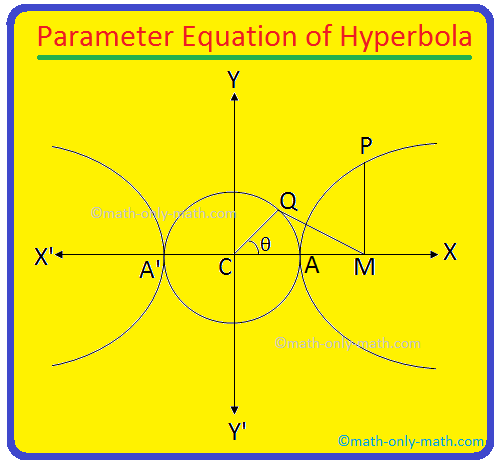

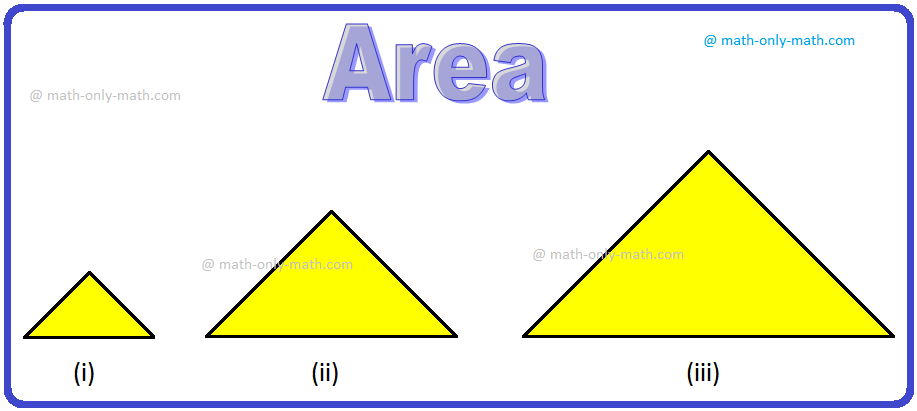
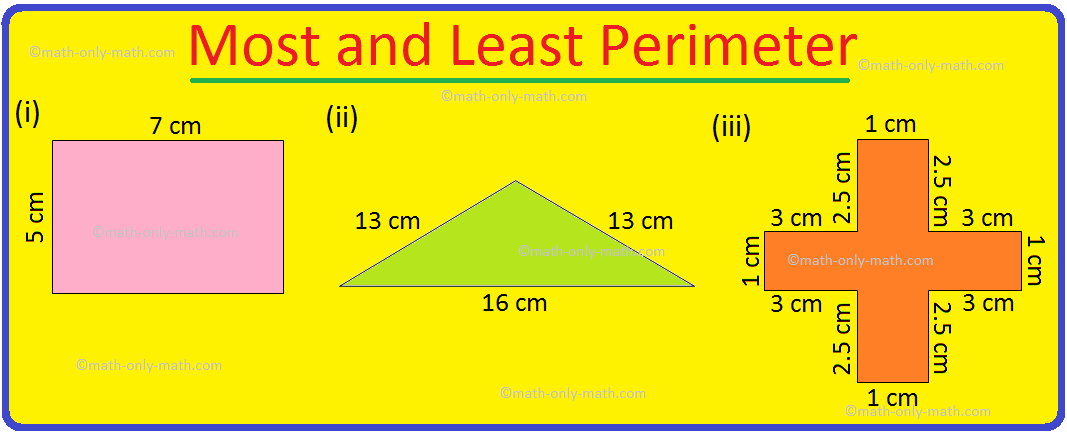
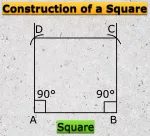
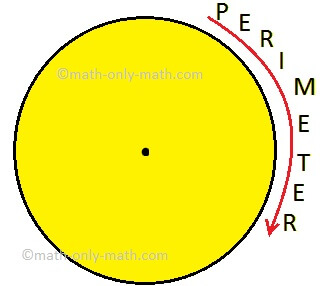
New! Comments
Have your say about what you just read! Leave me a comment in the box below. Ask a Question or Answer a Question.